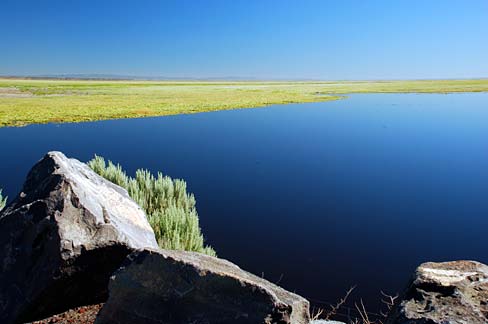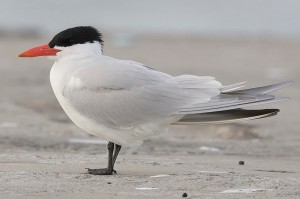Hoping to relocate flocks of fish-hungry terns, the US Army Corps of Engineers is creating a unique man-made island for them to call home.
An unusual project in Oregon’s Malheur Lake is seeking to improve the local ecosystem by luring some of the world’s largest colony of Caspian terns to a new 1-acre island habitat. A pretty white and black bird found nesting in large lakes and along ocean coasts on virtually every continent, despite numbering just 50,000 breeding pairs, the terns catch their dinner in a dramatic fashion; the birds take flight to hover above the water, then dive sharply down into the water to snatch fish in their beaks.
It is the terns’ feeding habits that have led to the proposed construction of the new island by the US Army Corps of Engineers; the crafty birds chose, in vast numbers, to nest on the 62-acre man-made East Sand Island at the mouth of the Columbia River, making the spawning salmon and steelhead that traverse the river easy and concentrated prey, decimating their populations.
The government is hoping to relocate a sizeable number of the estimated 20,000 terns that nest on the island to a safe distance from the path of spawning fish, which they are known to consume into the millions. The new island, according to local media reports, will be made from material taken from East Sand Island, which the government is attempting to shrink down to a size that will support a smaller population of roughly 6,000 terns.
The new island, for which the government is currently seeking contractors, is estimated to cost $1-$5 million, and use 40,000 cubic yards of rock and sand. Located at the foot of the epic, snow-peaked Steens Mountain, the Malheur Lake is one of several essential habits for waterfowl in an arid, desert-like part of Oregon. According to the Oregonian, this will be the seventh such man-made island project undertaken by the Corps for new tern nesting sites in Northern California and Oregon.
The other local man-made island projects have had mixed results; an new island in southeastern Oregon, within a lake in the Fern Ridge Reservoir, has not succeeding in luring terns to nest there, whereas other small isles built in northern California – perhaps in a better neighbourhood? – have attracted several thousand terns. It seems as though birds are, in that respect, similar to humans – when it comes to real estate, it’s all about location, location, location.
Read more about the tern relocation project: Link




